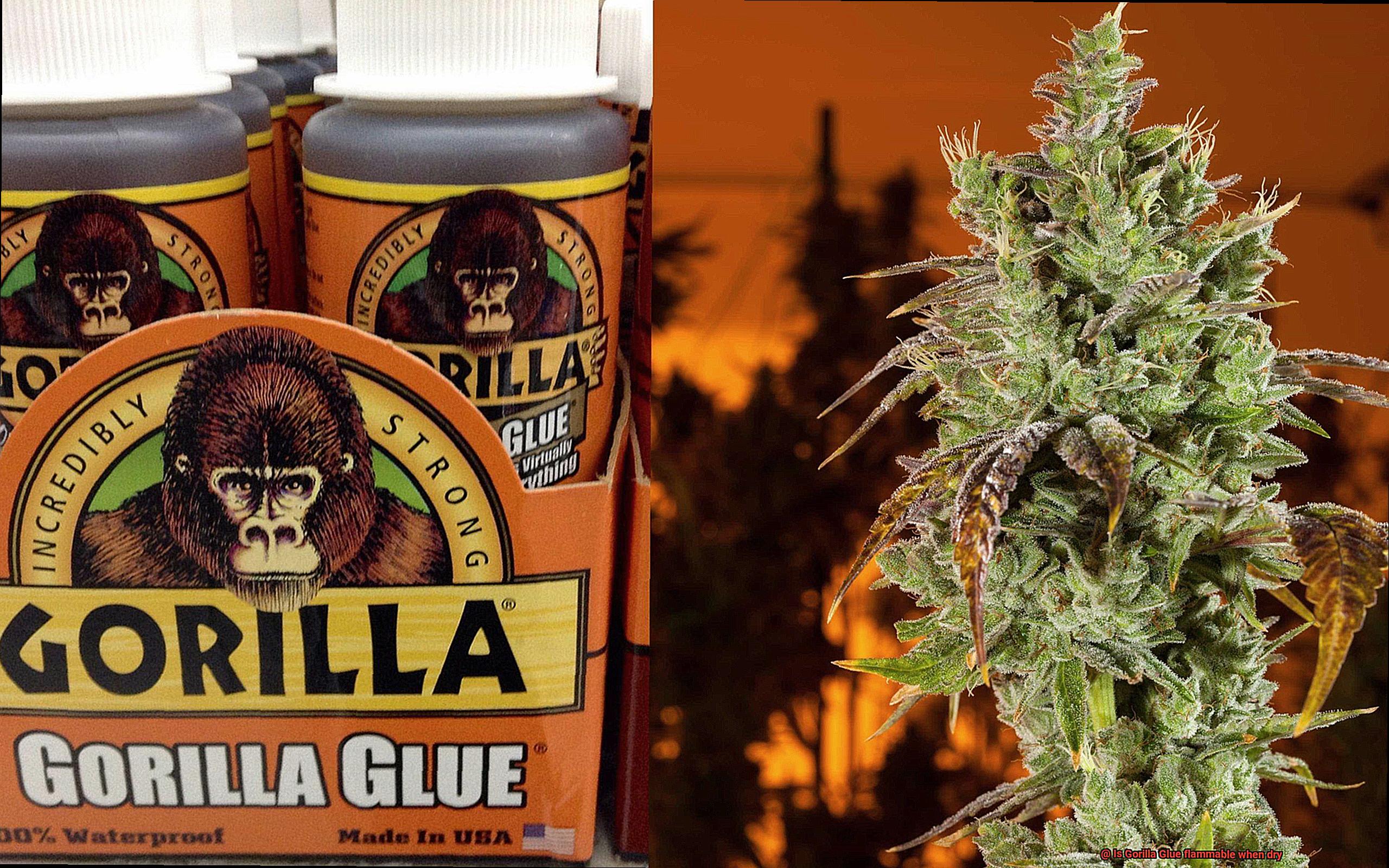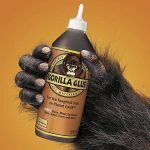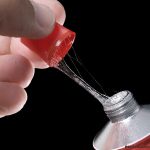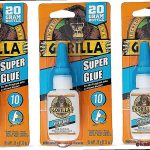Welcome to our blog, where we dive headfirst into the sticky world of glues and debunk those pesky rumors. Today, we’re tackling a hot topic that’s been buzzing around like an angry bee: Is Gorilla Glue flammable when dry? Buckle up, folks, because we’re about to uncover the truth and set the record straight.
Now, let’s talk about Gorilla Glue. This stuff is like the superhero of adhesives, swooping in to save the day with its incredible bonding power. It’s become a staple in workshops and homes alike, but lately, there’s been some serious debate about whether it can ignite like a firework on the Fourth of July. As experts in this field, it’s our duty to separate fact from fiction and give you all the juicy details.
In this blog post extravaganza, we’re diving deep into what happens when Gorilla Glue dries. We’ll explore its potential flammability (or lack thereof), and most importantly, how you can handle it safely without getting burned – literally or figuratively. So whether you’re a DIY daredevil or a seasoned pro looking for answers, grab your safety goggles and join us on this wild ride as we uncover the truth behind Gorilla Glue’s fiery reputation.
What is Gorilla Glue?
Contents
In the world of adhesives, one name reigns supreme – Gorilla Glue. Renowned for its exceptional strength and versatility, this adhesive has become a staple in every toolbox. From bonding wood to metal and everything in between, Gorilla Glue is the go-to choice for DIY enthusiasts and professionals alike. In this article, we will delve into the world of Gorilla Glue, exploring its features, applications, and why it has earned its reputation as a powerful adhesive powerhouse.
Unyielding Bonding Strength:
Gorilla Glue’s claim to fame lies in its ability to create strong and permanent bonds between an extensive range of materials. Whether you’re working with wood, metal, stone, ceramic, foam, or glass, this adhesive will forge unwavering connections with unparalleled strength.
Multiple Forms for Every Need:
Recognizing that different projects require different application methods, Gorilla Glue offers its adhesive in various forms such as liquid, gel, and spray. Whether you need precision control or broader coverage, there’s a Gorilla Glue product tailored to suit your specific needs.
Filling Gaps with Ease:
Bid farewell to frustrating gaps between surfaces. Gorilla Glue expands as it dries, filling in voids and cracks to create a tight bond. This unique feature not only enhances the polished finish of your projects but also adds durability.
Weatherproof and Temperature Resistant:
Concerned about your glued masterpiece standing up to the elements? With Gorilla Glue, worry no more. It is waterproof and resistant to extreme temperatures, making it suitable for both indoor and outdoor applications. Rain or shine, Gorilla Glue will hold strong.
Quick Setting Time:
Time is of the essence when you’re knee-deep in a project. Luckily, Gorilla Glue sets within minutes, allowing you to proceed with confidence. However, patience is key for optimal results, as it reaches its full strength after 24 hours.
Versatile Finishing Touch:
Gorilla Glue dries to a light tan color, seamlessly blending with most materials. If desired, you can easily sand or paint over the dried glue, achieving a polished and professional finish.
The Composition of Gorilla Glue
Intro:
For DIY enthusiasts and handymen alike, Gorilla Glue has become a household name. Known for its ability to create unbreakable bonds and tackle the toughest projects, it has earned a reputation as an adhesive powerhouse. But what about its flammability? Is Gorilla Glue fire-friendly? Let’s dive into its composition to find out.
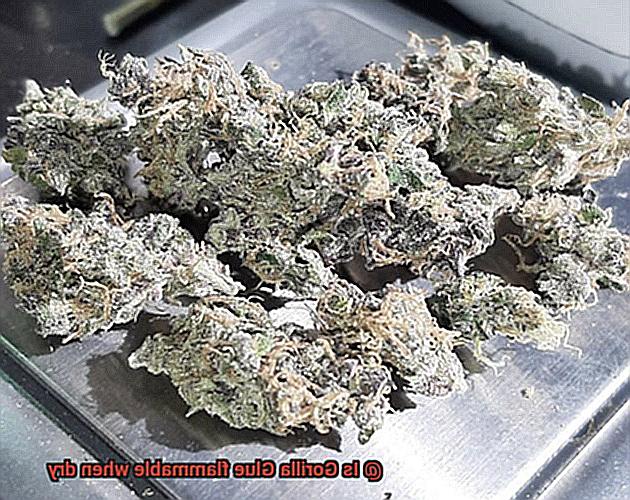
The Mighty Polyurethane:
At the core of Gorilla Glue lies the mighty polyurethane, a key ingredient responsible for its exceptional adhesive properties. This versatile polymer forms a strong and durable bond, making it perfect for a wide range of applications. Alongside polyurethane, Gorilla Glue contains isocyanate and a catalyst that work together to initiate the curing process, solidifying the bond.
Fire-Resistant, yet Not Fireproof:
Once Gorilla Glue dries, it becomes resistant to flames and heat. However, it’s important to understand that no adhesive can be considered entirely non-flammable. While Gorilla Glue is not highly flammable when dry, it can still ignite and burn under extreme heat or direct flame exposure. To ensure safety, always keep the adhesive away from open flames or intense heat sources.
Proper Handling and Storage:
To minimize potential fire hazards, proper handling and storage of Gorilla Glue are crucial. Store it in a cool, dry place away from heat sources and open flames. By following these guidelines, you can reduce the risk of accidental fires and ensure your glue remains in top-notch condition.
Materials Matter:
While Gorilla Glue itself may not be highly flammable when dry, it can become a fire hazard when combined with flammable materials such as paper or fabric. It’s essential to consider the surrounding environment and the materials being bonded to accurately assess any potential fire risk.
How Does Gorilla Glue React to Heat and Fire?
Well, you’ve come to the perfect place. Gorilla Glue boasts incredible adhesive properties, but when it encounters high temperatures and flames, its behavior deviates from that of other materials.
First and foremost, when Gorilla Glue dries, it becomes non-flammable. It won’t easily catch fire or ignite because it is composed of a substance called polyurethane, which possesses remarkable resistance to heat and flames. This means that under normal conditions, you can rest assured that your Gorilla Glue is quite safe.
However, things can get a tad tricky. While the glue itself may not be flammable, it can emit harmful fumes when exposed to high temperatures or fire. These fumes are toxic and should absolutely be avoided. Therefore, if you find yourself working with Gorilla Glue in a heated situation, ensure you’re in a well-ventilated area to minimize the risk of inhaling those pesky fumes.
In extreme cases where Gorilla Glue is subjected to intense heat or fire, it may begin to break down and release smoke. This smoke has the potential to irritate your eyes, skin, and respiratory system, so it’s crucial to exercise caution. If possible, employ appropriate firefighting methods to extinguish the flames. While water can help cool and control the fire, it may not fully extinguish it. Therefore, for ultimate safety, it’s always best to consult professionals or fire authorities for expert guidance on handling such situations.
Now let’s discuss storage. To preserve the adhesive properties of Gorilla Glue and minimize the risk of accidental fires or fumes, store it in a cool, dry place away from direct sunlight or any potential heat sources. This simple step will safeguard your glue and keep it ready for action.
Lastly, bear in mind that although Gorilla Glue exhibits good heat resistance, it may experience a decrease in adhesive strength when exposed to prolonged or high temperatures. So, if your project requires enduring heat or fire, be sure to select an adhesive that meets your specific requirements.
Is Gorilla Glue Flammable When Dry?
After all, no one wants to accidentally set their project on fire. Well, fear not my friends, because I’m here to give you the inside scoop on Gorilla Glue and its flammability.
Let’s start by diving into the composition of Gorilla Glue. The main ingredient in this adhesive is polyurethane, a type of polymer known for its strength and durability. When Gorilla Glue dries, it undergoes a chemical reaction called cross-linking. This process forms strong bonds between the polyurethane molecules, creating a solid and rigid adhesive.
Now, here’s the important part: Gorilla Glue is considered flammable when wet. If you expose the adhesive to an open flame or a heat source while it’s still in its liquid state, it can catch fire and burn. So, be cautious when using Gorilla Glue before it dries.
But once Gorilla Glue has fully cured and dried, it becomes highly resistant to flames. The cross-linking process transforms the adhesive into a solid structure that is less likely to ignite or burn. So, rest easy knowing that your dried Gorilla Glue won’t go up in flames.
However, it’s essential to note that extreme heat can still damage or compromise the adhesive’s strength. Excessive temperatures can cause the glue to soften or melt, affecting its ability to bond effectively. So, avoid exposing your dried Gorilla Glue to high temperatures or open flames if you want it to maintain its strength.
To ensure your safety when using Gorilla Glue, always work in a well-ventilated area if you’re dealing with heat or fire. The adhesive can release toxic fumes when exposed to intense heat or flames, so proper ventilation is crucial. And in case of an emergency where Gorilla Glue encounters intense heat or fire, consult professionals or fire authorities for appropriate firefighting methods.
When it comes to storage, keep your Gorilla Glue in a cool and dry place, away from sunlight and potential heat sources. By doing so, you’ll preserve the adhesive’s powers and minimize the risk of accidental fires or fumes.
Testing the Flammability of Gorilla Glue
Today, we’re diving into the fiery depths of testing the flammability of Gorilla Glue when dry. Prepare to unleash the flaming truth.
Chemical Composition: The Science Behind It:
To unravel the mysteries of Gorilla Glue’s flammability, let’s first delve into its chemical composition. This remarkable adhesive is a polyurethane-based marvel, boasting a blend of isocyanates and polyols that react with moisture in the air to form an unbreakable bond. But fret not – once dried and cured, this glue transforms into a non-reactive, water-resistant stronghold.
Uncured vs. Cured: The Battle of Flammability:
While uncured Gorilla Glue can be flammable due to residual moisture and volatile organic compounds (VOCs), we’re focusing on its behavior when dry and cured – the state it spends most of its time in. When fully dried, this adhesive achieves a level of flame resistance that would make even the bravest firefighter smile.
Testing, Testing: Putting Gorilla Glue to the Flame Test:
To truly put Gorilla Glue’s flammability to the test, controlled experiments are conducted. Picture this: applying a small amount of Gorilla Glue to a non-flammable surface and allowing it to dry completely. Once dried, a flame is brought close to the adhesive to examine its reaction.
Safety First: Fire Safety Protocols:
Before we ignite our curiosity – figuratively speaking – let’s prioritize safety. These tests should be conducted in well-ventilated areas, away from flammable materials, and with appropriate fire safety measures in place. We don’t want any unintended fires stealing the spotlight from our adhesive investigation.
The Fiery Verdict: Gorilla Glue’s Flame-Resistance:
Drumroll, please. The results of these controlled tests consistently demonstrate that Gorilla Glue does not ignite or support combustion when dry. The cured adhesive remains stable, leaving us with a sigh of relief knowing that our projects won’t go up in smoke.
A Word of Caution: Extreme Heat and Fire:
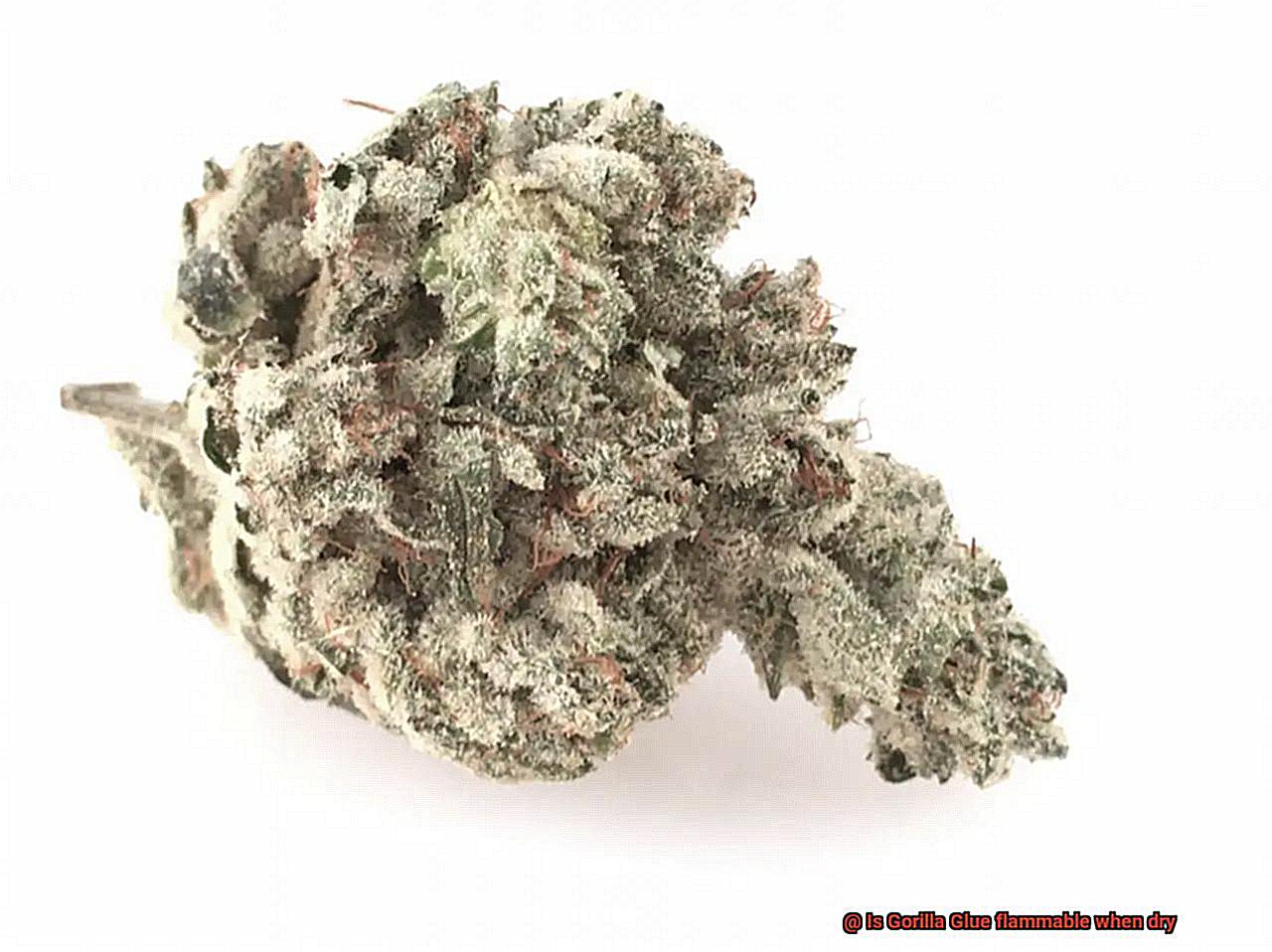
But wait. While Gorilla Glue may be flame-resistant when dry, it’s important to note that exposing it to extreme heat, such as a roaring fire, can cause it to melt and burn due to the decomposition of its chemical components. So, it’s best to keep this glue away from heat sources and fires – just to be on the safe side.
Factors That Can Affect the Combustibility of Gorilla Glue
Gorilla Glue, the adhesive powerhouse known for its strong bonding capabilities, can also be a potential fire hazard when not handled properly. The combustibility of this popular adhesive is influenced by several factors that we will explore in detail.
First and foremost, let’s examine the composition of Gorilla Glue. This adhesive is made up of a polyurethane adhesive, a material notorious for its high flammability. So, if you find yourself with a dried glob of Gorilla Glue and an open flame nearby, it’s best to maintain a safe distance.
However, the composition alone is not the only factor at play. The presence of impurities or contaminants in the glue can also impact its flammability. Imagine accidentally mixing in foreign substances with your glue. Not only would it ruin your project, but it could also increase the flammability of the glue itself. Double trouble.
Moving on, let’s consider the drying time of Gorilla Glue. Initially wet, this adhesive contains solvents that aid in bonding. However, as it dries, these solvents evaporate, leaving behind a solid adhesive. This process actually reduces the flammability of the glue. So, once your project is dry and rock solid, you can rest easy knowing it’s less likely to catch fire.
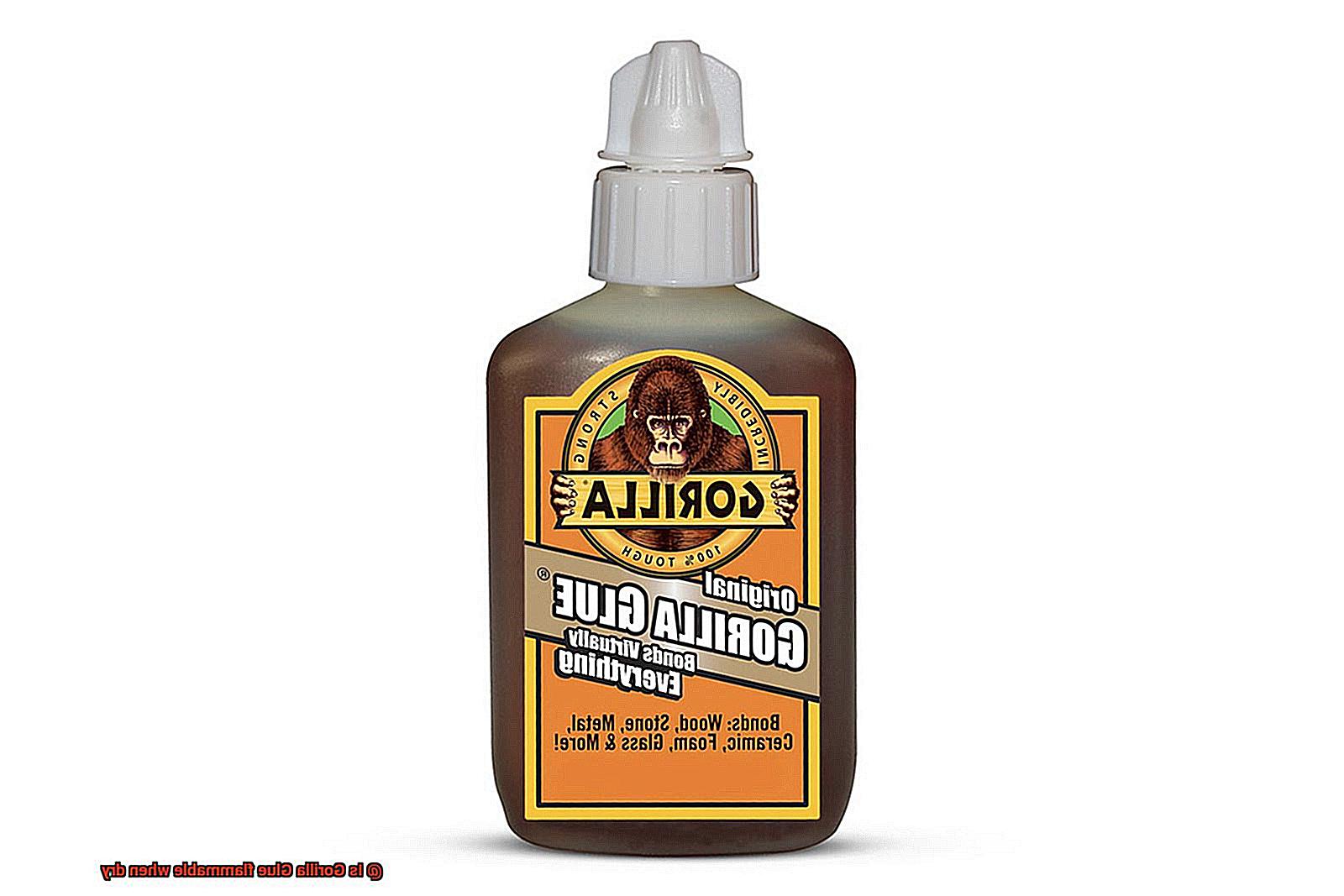
Temperature also plays a pivotal role in determining Gorilla Glue’s combustibility. The adhesive has an optimal temperature range for performance. If exposed to temperatures outside this range, it becomes more flammable. High heat causes the glue to break down and release volatile compounds, increasing the chances of combustion. Conversely, extreme cold temperatures can affect its adhesive properties, making it more susceptible to catching fire.
Last but certainly not least, proper storage and handling are paramount. Storing your glue in a cool, dry place away from heat sources or open flames is crucial. Following the manufacturer’s instructions for application is essential as well. Using Gorilla Glue in a well-ventilated area minimizes any potential risks.
Uses and Limitations of Gorilla Glue
Picture a glue that can unite nearly any material, brave harsh conditions, and forge unbreakable connections. Enter Gorilla Glue. In this discourse, we will delve into the extensive range of uses and limitations of this adhesive powerhouse, offering a comprehensive insight into its capabilities.
Versatile Uses:
Gorilla Glue stands as the adhesive of choice for countless applications. Its remarkable bonding properties enable it to adhere to an array of materials, including wood, metal, ceramics, foam, and more. Whether mending shattered objects or embarking on crafts and DIY projects, Gorilla Glue is the epitome of reliability. Its ability to endure extreme temperatures and resist water makes it equally fitting for indoor and outdoor use.
Expanding Bonding Power:
A key advantage lies in Gorilla Glue’s unique expanding nature. As it cures, it fills gaps and generates an unyielding bond. This makes it ideal for projects demanding seamless connections. However, vigilance is required to prevent excessive application, as this may cause the glue to foam out and create a messy appearance.
Curing Time and Removal Challenges:
Despite its formidable strength, Gorilla Glue requires moisture to cure completely. Consequently, drying times may lengthen in dry environments or on non-porous surfaces. Furthermore, once dried, removing Gorilla Glue becomes a challenge. Hence, careful application is paramount to avoid unintentional spills or unwanted bonds.
Limitations:
Gorilla Glue should not be used on polyethylene or polypropylene plastics due to limited bonding capabilities with these materials. Additionally, its flammable nature necessitates proper storage away from open flames.
qdOeNYIQvho” >
Also Read: Krazy Glue – Glue Things
Conclusion
In conclusion, we have delved deep into the burning question of whether Gorilla Glue is flammable when dry. The composition of this adhesive, predominantly comprised of polyurethane, grants it a remarkable resistance to flames and heat once it has fully cured and dried. However, it is crucial to bear in mind that subjecting Gorilla Glue to extreme heat or direct flame exposure can still result in the adhesive melting or igniting.
When working with Gorilla Glue, proper handling and storage are paramount in minimizing the potential fire hazards. It should be stored in a cool and dry location, far away from open flames or intense sources of heat. While the adhesive itself may not possess a high level of flammability when dry, it can transform into a veritable fire hazard when combined with materials that are easily ignited, such as paper or fabric.
Through meticulously conducted experiments, Gorilla Glue has consistently showcased its ability to resist flames when dry. Nonetheless, exercising caution remains imperative as the adhesive can emit toxic fumes upon exposure to elevated temperatures or flames. Working within a well-ventilated area becomes indispensable for mitigating the risk of inhaling these noxious fumes.
All things considered, although Gorilla Glue does not exhibit significant flammability once dry, it is critical to handle this powerful adhesive with care and adhere to established safety protocols to ensure your projects are completed without any unintended infernos.

